How Did It Come To This : The Insect-kinden in their own words
I. Lives of the Monster Insects (from the secret histories of the Moths)
“An age ago, before all records, before metal was smelted, before writing began, the great insects came.
That was a world with different skies, with strange beasts, with stranger people. But the insects were the end of them. They hunted the beasts, they devoured the people, their wings were a shadow on the sky.
There were those amongst the people of that time who reached out, until they could touch the essence of the insects, the perfection and the ideal that shaped them. They stole the merest spark of that power, and took it within themselves, and spoke to the insects in their own language. This was the first Art. These were the first Kinden. All others despaired and died.”
 II. The reign of the magicians (from the ancient carvings of Khanaphes)
II. The reign of the magicians (from the ancient carvings of Khanaphes)
“The Art was at first a kind of magic, mastered by magicians who gifted it to those who were worthy. Soon, all who survived could use the insect Art, and the people of the world had formed many tribes: Beetle, Ant, Moth, Mantis. Each learned the Art to emulate the strengths of their totems.
It is said that there were those, living where the land met the water, who even abandoned the beasts of the ocean to learn the Art of the sea monsters. The oldest tales say that the great shrugging of the earth that divided the Commonweal from the Lowlands sent great swathes of land to be swallowed by the deeps, and if the sea-kinden persisted after that, they were not known in Khanaphes.
The leaders of the kinden who remained on land were those who were powerful in the magic of the world. Their wisdom shaped the first cities, raised the first crops, smelted the first blades. The first powers of the world arose out of these magi: the Spiders of the south, the Moths of the west, the Dragonflies of the northern Commonweal, the Mantids, the Woodlice, the (name defaced). Each had their wisdom, and each came to learn from the Masters of Khanaphes, who were wisest of all…”
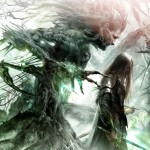 III. The War with the Worm (Fragments from the archives of the Aldanrael family)
III. The War with the Worm (Fragments from the archives of the Aldanrael family)
“All the old rumours lead us to a great battle with a foe whose name is lost, known now only by an insult: the Worm. Our ancestors fought there, as did all the great dynasties of the day – supposedly even the legendary Masters of waning Khanaphes took to the field. And when the day was won and the Worm driven back to their underground haunts, something was done. So loathed were these Worm-kinden that they could not be left to multiply and recover their strength. Magic, the rumours say; the greatest piece of ritual magic the world has known. Enough to destroy the Worm? But that is not what the rumours claim. The rumours hint that the Worm, and the Worm’s slaves and prisoners and their places, were twisted out of the world, locked away, sealed.
This was the height of the Days of Lore, the stories tell. After this came the strife: the Moths against the Mosquito, the Commonweal against its rebellious princes, our own Aristoi families turning on each other. There will never be an age of magic such as once supposedly arose to defeat the Worm. These days, even amongst our own people, few truly believe it ever was.”
 IV. The End of the Bad Old Days (Collegiate children’s primer)
IV. The End of the Bad Old Days (Collegiate children’s primer)
“The world was greatly plagued by tyranny in those days. Our ancestors had been the slaves of the Moths and their Mantid soldiers for longer than we knew, for we were forbidden to keep any records of history that disagreed with theirs. All the world was ruled by those who these days are known as ‘Inapt’ but back then called themselves ‘masters’. In the minds of their slaves, though, new ideas were hatching – ideas that those masters could not comprehend: a new science of levers, gears, of forces and tensions. Our ancestors had been dominated by charlatans and false ‘magicians’ for long enough, and it was here, in Collegium, that the first blow was struck. The masters were overthrown by their servants; the ancient warrior traditions of the Mantids proved inefficient against the newly-invented crossbow, a weapon anyone Apt could pick up and use with a few hours’ training…”
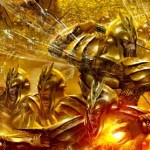 V. Dawn of Empire (preface to The Histories of the Emperors of the Wasps)
V. Dawn of Empire (preface to The Histories of the Emperors of the Wasps)
“Three generations ago, one man united the feuding Wasp-kinden tribes under one banner. Emperor Alvric, as he was known by the time of his death, took a divided people and forged them into a single martial state. His son expanded the borders to conquer the Wasps’ many southern and eastern neighbours, most notably the Bee-kinden city of Vesserett, the Wasps’ chief early rival for power. In the last years of his reign, Alvdan I set out to conquer the Commonweal, a single state considerably larger than his entire Empire. It is to his great credit, and that of his son, Alvdan II, that the vastly outnumbered Wasp-kinden were able to prevail, holding half the Commonweal after twelve years of war. For the Empire, this meant a generation of battle-hardened veterans looking hungrily over the Lowlands towards Collegium and Sarn. For the Commonweal, the very idea of Wasp-kinden became synonymous with terror…”
SPOILER WARNING FROM HERE!
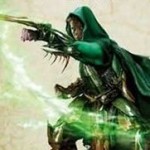 VI. The Death of Alvdan II (Rekef Inlander report, delivered shortly before the writer’s death)
VI. The Death of Alvdan II (Rekef Inlander report, delivered shortly before the writer’s death)
“If the Emperor had lived, Collegium would have fallen to our forces, no question about it. They had been softened up by the local Ant-kinden. They would not have endured a long siege. That they fought at all is down to the influence of their War Master, one Stenwold Maker, a man whom our agents confirm has long harboured a grudge against the Empire.
Of the death of Alvdan II, it is told in the Lowlands, and most other places, that a Mantis-kinden gladiator who was to perform before him instead somehow managed to cut his way through the Imperial guards to slay the Emperor.
Eyewitness testimony varies, however, and seldom supports this version of events cleanly. Moreover, my own investigations have uncovered the strong possibility of a conspiracy within the Imperial palace itself. I have uncovered links between Alvdan’s sister Seda, one of the Emperor’s slaves and several of his close advisors, and I strongly believe that, while the Mantis served to provide a distraction, our master was murdered by those closest to him.
As you know, General, the woman Seda is now intended to take the throne. I therefore beg you to take steps to ensure that she does not. I do not know how far this conspiracy goes.”
 VII. The Second Imperial Advance (from the memoirs of Jodry Drillen, Speaker of the Collegiate Assembly)
VII. The Second Imperial Advance (from the memoirs of Jodry Drillen, Speaker of the Collegiate Assembly)
“It surprised nobody, I think, what happened next. We saw the Wasps divided, and set about to emulate them. The great Lowlander alliance Stenwold and I had assembled fell apart with alacrity. The Ant states began rattling swords at one another, and then our Spider allies made plots that, when discovered, lost us their friendship. And of course, while the Wasps unified under their new Empress, we remained divided.
How this will go now is anyone’s guess. Collegium has suffered under the bombardment brought by the Empire’s flying machines. We have spent all we have, exhausted the currencies of blood and toil, gold and ingenuity, just to keep them from our door. And still the Imperial Second Army is crawling back down the coast towards us. It seems as tough nothing can stop it.”
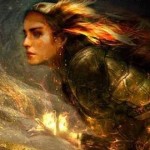 VIII. The magician’s tale (an account by the Woodlouse slave Gjegevey before his disappearance in the Nethyon)
VIII. The magician’s tale (an account by the Woodlouse slave Gjegevey before his disappearance in the Nethyon)
“It was the box that was the cause of it. The Mosquito slave had acquired at great expense a box that held all the power of one of the Moths’ last doomed rituals. He planned to use it to remake the Wasp girl, Seda, as his puppet, and so inherit an Empire. He stole the life of the Emperor for his magic, but the Mantis Tisamon slew him in turn, and shattered the box. The power within, you see, had to go somewhere, so it followed the chains of ritual. My mistress Seda, first Empress of the Wasps, was one such beneficiary, as was a Beetle girl, Cheerwell Maker, linked to the box by a path that even now I cannot untangle. Both have been remade in the fashion of the ancient magicians: strong with magic, and stripped of the Aptitude that made them part of the modern world.
My mistress is bold. She went to Khanaphes and made her demands of the Masters that still dwell beneath the city. She had them crown her with their heritage, made her their heir. In doing so, they ennobled the Maker girl also, and since then the two have waged war on each other, neither able to abide the existence of the other.
Now my mistress seeks more power to defeat her rival. She has travelled to the Mantis forest of the Nethyon. I confess, I led her there for fear she might seek strength in worse places. But I am deathly afraid. Now I am here, I feel our old adversary. I understand the meaning of this place, and what is chained within the forest’s heart. The Maker girl is here also. With two magicians fighting over the power here, I do not know what may be unleashed.”
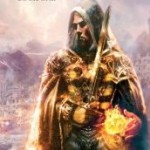 IX. Breaking the Shell (report by General Tynan of the Imperial Second Army, known as the Gears)
IX. Breaking the Shell (report by General Tynan of the Imperial Second Army, known as the Gears)
“The city is ours. Stenwold Maker’s body is lost in the bay. We have order on the streets but we hear strange rumours. Nobody knows what has befallen General Roder and his forces. Others have also gone missing: locals, patrols, sometimes entire villages are found abandoned, the residents gone. It is as though they have all been swallowed by the earth. Send orders urgently.”
This piece was originally posted on Tor's website, but they're happy with me reprinting it here, and I've taken the opportunity of prettying it up a bit. The art, of course, is all from covers by Jon Sullivan (1,3,5,6) and Alan Brooks (2,4,7,8,9)

 © 2008-2025 Pan Macmillan
© 2008-2025 Pan Macmillan
Hey Adrian, some good background here. I've thoroughly enjoyed all the Shadows books and can't wait for the final instalment. What a journey it's been. Brilliant stuff!